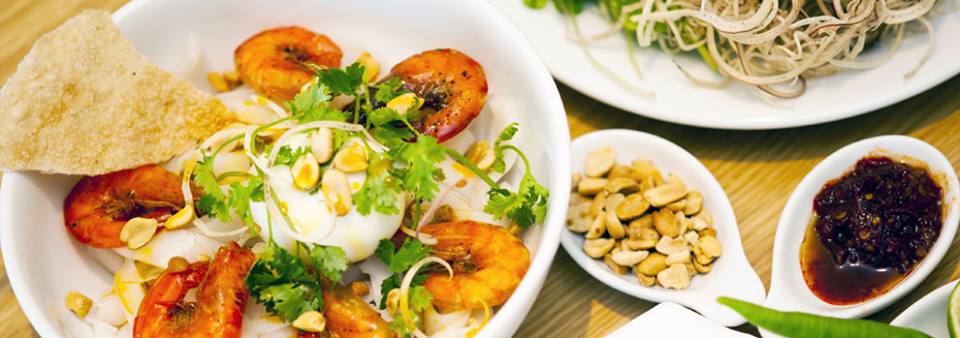For generations, the craft of making Tuý Loan rice paper (Hoa Phong Commune, a Vang District) has become an integral part of local life, enriching the rural cultural heritage, elevating the culinary value of rice, and honoring the traditions of wet rice agriculture. Over the years, successive generations have preserved this craft, contributing to the establishment of the renowned Tuý Loan rice paper brand in the culinary culture of Da Nang.
Preserving the Essence of the Craft
The land of Tuý Loan was once a bustling and prosperous area, where its market served as a trade hub for regional specialties: fermented fish sauce from Hội An and Da Nang, forest products from the western regions, and handcrafted items such as mats, conical hats, and bamboo baskets from Cam Ne.
Among the region's most famous culinary specialties are rice paper and Quang noodles, cherished gifts that have been passed down through generations, as reflected in the local proverb: “Tuy Loan offers a hundred delicacies, savor them wisely lest your family be left wanting.”
Tuy Loan rice paper is distinguished by its unique flavor, derived from rice, sesame, ginger, garlic, fish sauce, salt, and sugar. When grilled over charcoal, the rice paper becomes delightfully crisp, releasing a fragrant aroma with a subtle spiciness from fresh ginger, garlic, and sesame, and a balanced sweetness and saltiness from sugar and fish sauce, stimulating the taste buds.

Tuy Loan rice paper is famous for its delicious flavor of sesame tea, wine, garlic, fish sauce, salt, sugar...
According to village elders, the craft of making rice paper in Tuý Loan has existed for centuries, with no clear record of its origins. Many artisans recall growing up watching their parents and grandparents practice this craft, eventually mastering it themselves.
The craft has been a well-known local tradition since before 1975, with nearly every household in the village having a rice paper-making kiln. The rice paper was used for family consumption, sold at markets, given as gifts, and offered on ancestral altars during important ceremonies such as memorial days, Lunar New Year, and village festivals. The busiest production period occurs in the weeks leading up to Tet, when villagers work tirelessly to meet the high demand.
Although no official records exist regarding the origins of Tuy Loan rice paper making, researchers suggest that rice paper likely accompanied early Vietnamese settlers as they expanded into new lands, bringing their culinary traditions with them. Another theory posits that as settlers cultivated rice in the area, they developed various rice-based food products, with rice paper emerging as one of the most practical and convenient.
For 84-year-old Dang Thi Tuy Phong of Tuy Loan Đong 2 Hamlet, the craft has been a part of the local culture since before 1975. She recalls that while her family did not initially practice the trade, she began helping villagers with production as a young girl and later established her own kiln to support her family.
“I have been devoted to this craft for nearly 50 years. Now, as I grow older, I am passing it down to my daughter, who continues the tradition under the brand ‘Bánh Tráng Bà Tuý Phong,’” she shares.

In the memory of Ms. Dang Thi Tuy Phong (84 years old, residing in Tuy Loan Dong 2 village, Hoa Phong commune), the profession of making rice paper in the locality has existed for a long time, before 1975.
Similarly, 70-year-old Tran Thi Luyen of Tuy Loan Tay Hamlet represents the fourth generation in her family to uphold the craft. She learned from her mother as a child and has been making rice paper for over 60 years. Dang Cong Be, 68, also from Tuy Loan Tay, does not recall exactly when the craft began but affirms that it has been passed down through generations.
“I have been involved in this craft for nearly 50 years. It is our family’s primary source of income. Though the work is strenuous, it is a way of life. Every year, from the beginning of the 11th lunar month, the kilns in the village fire up continuously to meet the demand for Tet preparations,” he says.
Rice paper making in Loan has traditionally been a supplementary occupation during the agricultural off-season, helping families earn additional income.
However, what makes this traditional craft special is that, from its inception to the present day, it has been closely associated with the culture, customs, and beliefs of the local people. The products of this craft are not only a daily culinary staple in every household but also an indispensable offering on ancestral altars during death anniversaries, the Lunar New Year, village festivals, and full-month ceremonies for newborns. Because of this deep cultural significance, generations of Túy Loan residents have continued to preserve and develop the art of making rice paper until today.
Currently, the successors of this traditional craft, who inherited it from their predecessors, are mostly elderly, between 50 and 60 years old. They learned the trade from their grandparents, parents, and other relatives. Many families have been engaged in rice paper making for three or four generations, and they themselves have been practicing the craft for 10 to 50 years.
Some individuals have been involved in the trade since childhood, helping their families make rice paper from a young age, and naturally continuing their family's legacy as they grew up. Others, having been born and raised in Túy Loan, developed a deep appreciation for the craft through years of watching and enjoying rice paper, embedding it in their childhood memories as a source of pride and an integral part of their homeland's heritage.
Additionally, the craft’s products hold great sentimental value, as they have become a well-known culinary specialty and a cherished rural gift. People often present them to relatives and friends on special occasions such as the Lunar New Year. Many tourists visiting Da Nang also choose to buy Túy Loan rice paper as a meaningful souvenir for their loved ones. For those who live far from home, enjoying a piece of rice paper brings back the flavors of their homeland. Carefully packaged, these rice papers travel across the country and even overseas with visitors and expatriates.
Thus, these rice papers are more than just food—they represent local pride and an irreplaceable part of Da Nang’s cultural identity. Generations of residents have upheld this craft not only as a means of livelihood but also as a way to preserve the traditions of their ancestors and maintain their local heritage.
The Pride of the Local People
The establishment and development of the rice paper-making craft, along with the long-standing reputation of Túy Loan rice paper, have become a source of great pride for the local community. Today, this traditional product plays a vital role, deeply intertwined with the cultural heritage, agricultural production, and socioeconomic activities of the people in Hòa Phong Commune, Hòa Vang District, Da Nang City.
Túy Loan rice paper is primarily made from rice flour, combined with ingredients such as white sesame, ginger, garlic, sugar, fish sauce, and salt, creating a distinctive flavor. All these ingredients are locally sourced. Before the rice paper is made, meticulous preparation is required to ensure cleanliness and quality. The sesame seeds must be white, soaked, peeled, and rinsed thoroughly before being drained. Fresh ginger and garlic are peeled and finely ground. Other seasonings such as fish sauce, salt, and sugar are prepared the night before.

At the Túy Loan village festival, held annually on the 9th and 10th days of the first lunar month, there is a rice paper-making and grilling competition between different hamlets.
Rice paper is a staple food that can be stored for a long time and consumed whenever needed without requiring additional preparation. It pairs well with various dishes, making it a versatile part of Da Nang’s culinary culture. People in Da Nang enjoy rice paper at any time of the day. In the morning, they have it for breakfast. Mid-morning, when feeling slightly hungry, they grill a few pieces to snack on. At lunchtime, rice paper can even replace a meal. In the afternoon, when hunger strikes, they eat rice paper. Late at night, when feeling hungry, having rice paper readily available at home is a convenient solution.
People eat rice paper casually—to enjoy its flavor, to pass the time, or simply for the pleasure of snacking. It is served at gatherings and banquets, carried along on long journeys or trips to be eaten when feeling peckish or upon reaching a resting place. During the Lunar New Year (Tết), rice paper becomes even more essential than on regular days. It provides a light, non-greasy alternative to heavier festive dishes. With no need for preparation, one can simply pick up a piece and eat it. It also complements a variety of foods such as vegetables, pork, braised bamboo shoots, fermented pork rolls, and pickled onions.
Rice paper is also a common appetizer at banquets. Before the main courses are served, guests always start by breaking and eating grilled rice paper. The crisp, crunchy texture acts as a prelude to the feast, serving as a light and enjoyable starter. A banquet without rice paper feels incomplete and dull. Some even believe that the crackling sound of rice paper being eaten symbolizes the cheerful and festive spirit of the meal. Additionally, rice paper keeps guests occupied while waiting for food and allows them to continue nibbling after they are full, helping to maintain proper dining etiquette.
In the culinary culture of Đà Nẵng, Túy Loan rice paper is an essential ingredient, especially when eaten with Mì Quảng. A bowl of Mì Quảng without grilled rice paper loses much of its appeal.
Rice paper also pairs well with various dishes on the dining table, from meat and fish to vegetables, braised, stir-fried, steamed, and fried dishes. Grilled rice paper is even crumbled into porridge for added texture. It can also be used as an edible scoop, replacing a spoon for dishes like salads or stir-fried baby clams. When eaten with blood pudding (tiết canh), broken pieces of rice paper enhance the dish with their crispiness and aroma. Some people drizzle a bit of water over grilled rice paper to slightly soften it before dipping it in fish sauce. Most notably, in Đà Nẵng’s culinary culture, Túy Loan rice paper is a crucial accompaniment to Mì Quảng—one of the city’s most famous specialties. A bowl of Mì Quảng without grilled rice paper simply wouldn’t taste the same.
The people of Túy Loan believe that rice paper is a "pearl of the heavens," not just any pearl, but a refined gem made from the purest white rice grains. For this reason, rice paper is always placed at the highest position on the offering tray during ancestral feasts. As a long-standing tradition passed down through generations, whether rich or poor, whether the feast is lavish or simple, a few pieces of grilled rice paper must always be present. Its absence would feel like a lack of sincerity toward the deceased. In folk beliefs, rice paper, with its round shape and white color, symbolizes "yang" (heaven), balancing with "yin" (earth), represented by the other offerings.
During the annual Túy Loan village festival, held on the 9th and 10th days of the first lunar month, Túy Loan rice paper is an indispensable offering to the ancestors. It serves as a tribute to those who founded the village and established traditional crafts, including rice paper making, which has provided livelihoods for generations. As part of the festival, competitions in making and grilling rice paper take place among different hamlets. These contests not only showcase the artisans' skills but also help preserve and honor this long-standing craft.
Additionally, at other local temple festivals, such as those at Túy Loan and Bồ Bản communal houses, rice paper is offered to the village's founding deities and guardian spirits. These rituals express gratitude to the ancestors who pioneered land cultivation and village establishment in this region.

Today, the traditional craft of making Túy Loan rice paper continues to be preserved, practiced, and passed down through generations by artisans, elders, and younger generations alike.
Even in the full-month celebration (Lễ Đầy Tháng) for newborns, rice paper is an essential offering. Some local families still maintain the custom of placing grilled rice paper on the offering tray dedicated to Bà Mụ (the midwife goddess). The full-month ceremony includes various rituals, one of which is the "flower offering" (also known as "bắt miếng"). During this ritual, the baby is lifted and placed on a stack of twelve grilled rice papers. The person holding the baby deliberately presses down to break the stack, producing a distinct "crack" sound. This symbolizes the child reaching a healthy weight within their first month—"heavy enough to break a stack of rice papers." The ritual expresses hopes for the baby’s strength and rapid growth.
Rice paper, a tangible product of this traditional craft, is not only a staple in daily meals but also an integral part of local customs and traditions. Moreover, it has become a well-known specialty, often chosen as a gift for family and friends during festivals and holidays. Many tourists visiting Đà Nẵng or the ancient village of Túy Loan purchase rice paper to enjoy at home or as souvenirs.
The Túy Loan rice paper brand has been famous for generations. In February 2024, the Ministry of Culture, Sports, and Tourism officially recognized Túy Loan rice paper making as part of the National Intangible Cultural Heritage. This recognition serves as a crucial "driving force" for preserving and developing the craft village.
At present, this traditional craft is still being safeguarded, inherited, and passed down by artisans, elders, and younger generations. Furthermore, it stands as a valuable historical resource for research on Vietnam’s southward expansion, land reclamation, agricultural production, and the formation of communities in Hòa Vang throughout history.
According to danang.gov.vn

Da Nang Launches the "Da Nang Food Tour" Campaign DANANG LAUNCHÉ THE "Da Nang Food Tour"

MISS INTERNATIONAL 2024 HUỲNH THỊ THANH THỦY EXPERIENCES DA NANG FOOD TOUR AT MUỐI BIỂN SEAFOOD

Han Market is open for sale THROUGH Lunar New Year At Ty 2025

BANA BREW HOUSE – THE FIRST CRAFT BREWERY ON A MOUNTAIN PEAK IN VIETNAM

Celebrate the festive season in the heritage land with Anmira Resort & Spa Hoi An.

LA MAISON 1888: The only Michelin-Starred Restaurant in Da Nang

What's at the 2024 B'estival Beer Festival on Ba Na peak?

Da Nang develops its cuisine into a distinctive tourism product.
















